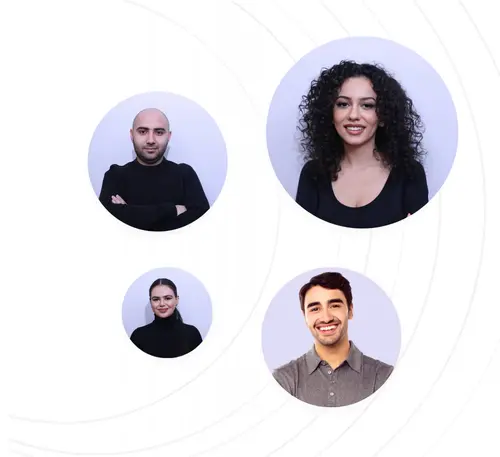Updated August 14, 2025
10 Link-Building Case Studies from My Own Campaigns (Fails Included)
I’ve been stressing my nerves over link-building for more than six years. Believe me, I’ve seen a lot, from clients who want high DA websites with zero quality, to companies that need great backlinks with a very small budget, and guest post writers who wish to their 500-word AI bullshit published in Forbes.
I’ve run hundreds of link-building campaigns, from SaaS to B2B and enterprise clients, and tried various link-building techniques and strategies, investing in tons of link-building software to organize link-building outreach, test, fail, and succeed.
Finally, I think it’s time to share with you what I’ve found, where I’ve failed, and how I save time for better and more effective link-building campaigns. All ten case studies are based on my own work and experience.
🚀 Case Study for a SaaS Company
Everyone in our team knows that I’m a big fan of SaaS SEO and run SaaS SEO campaigns with real passion. In 2024, we started working with a SaaS company (B2C AI video generator software), and after 7 months, we achieved 500% traffic growth.
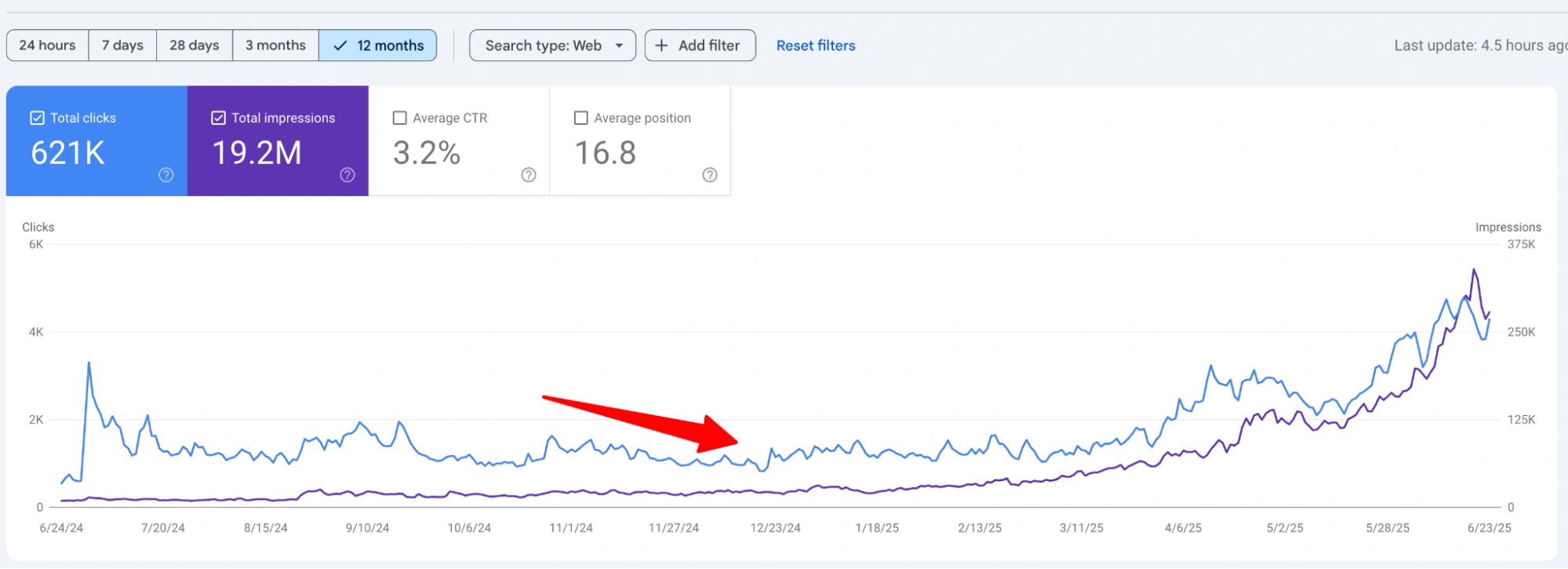
It’s worth mentioning that we had a custom SEO strategy in place and handled everything, from content strategy development and execution to SEO automation, management, technical SEO, and more.
But today, I want to highlight the key factors in our link-building campaigns that moved the needle.
So, how exactly did we structure our SaaS link-building campaigns? What factors helped us the most? Let’s take a look below.
The client’s SEO budget was a little limited, so we couldn’t afford to run various link-building strategies. Instead, we decided to focus on 3-way link exchanges and HARO link-building techniques.
Our link-building specialists started securing 12–15 backlinks through exchanges and around 2–5 PR backlinks from HARO campaigns.
Meanwhile, we also hired two researchers to craft some link-building assets (statistics pages) and used Lovable (great for on-a-budget clients) to design free tools that cost us almost nothing.
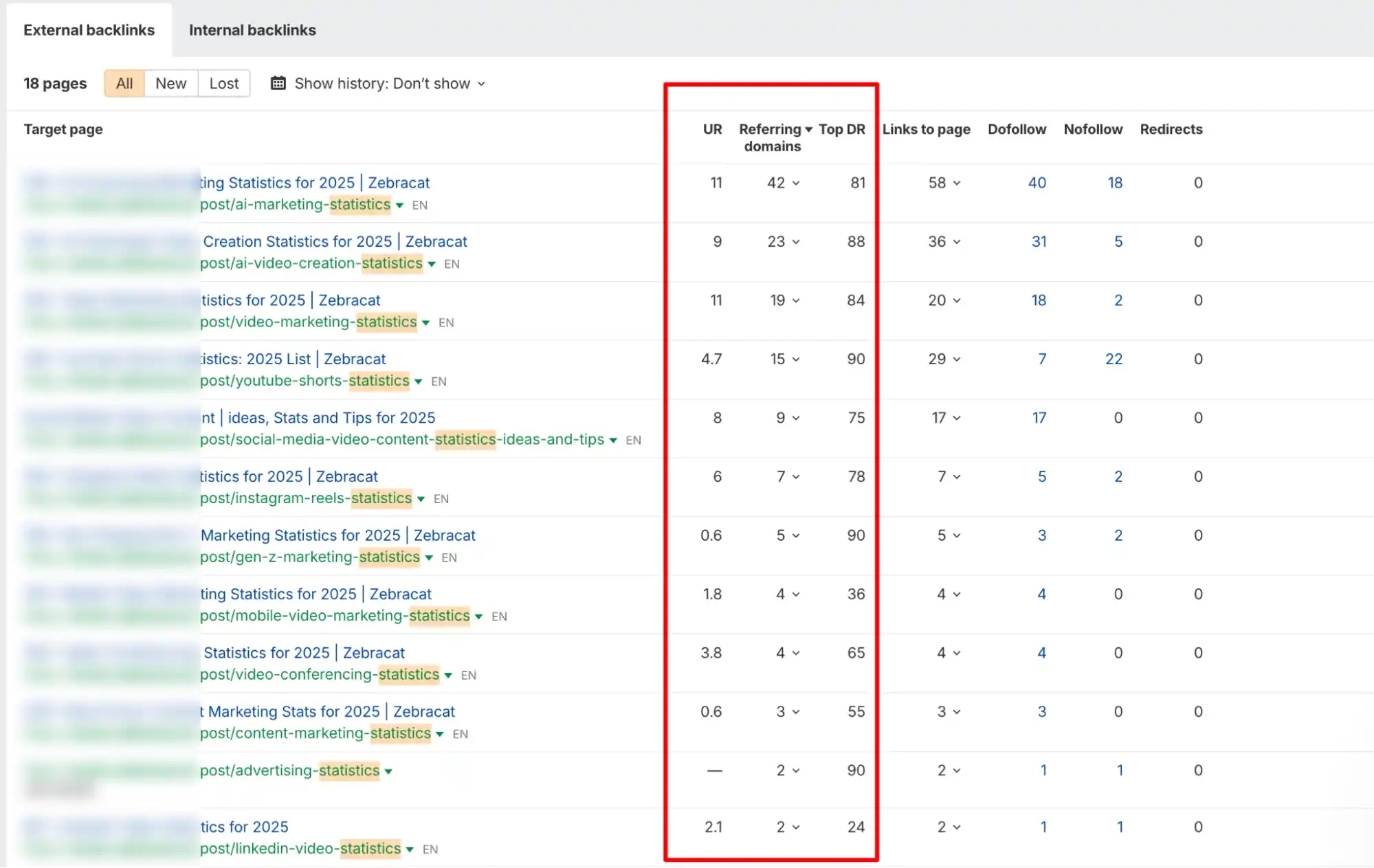
I swear, we earned 100+ links from statistics content alone, just in 3 months, from high DR websites like ClickUp, Webflow, and more.
Overall, we secured 65–70 backlinks from ABC exchange and earned 100+ organic backlinks (combined with a great content strategy and technical SEO).
- Monthly traffic increase: 500%
- Links built: 65-70
- Links earned: 100+
- Period: 7 months
- PBNs
- Link Farms
- Sponsored links
🚀 Case Study for a Telehealth Business
When we first got in touch with this telehealth company, they had already launched a fully custom website targeting the US market. To their credit, they weren’t starting from scratch; they had an on-page SEO strategy already running. But once we dug in, we quickly realized they’d gone all-in on programmatic SEO (Not in the smart way).
They had built over a thousand location-based pages, one for every city and region they could think of, all stuffed with low-effort AI content. Thin content, barely any topical depth, and clearly done in bulk just to “scale.” Now, I don’t have a problem with programmatic SEO if it’s executed right. But in this case, it was a classic example of prioritizing volume over value.
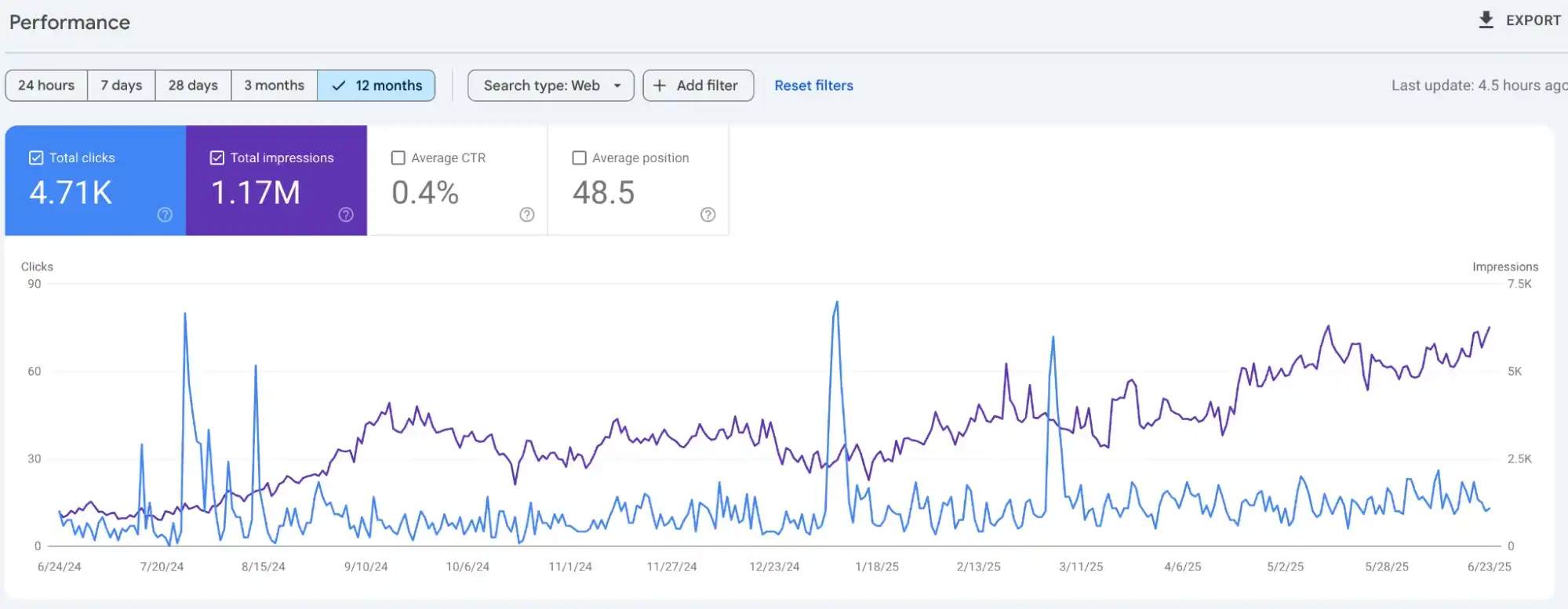
We reviewed the site structure, sampled a bunch of these pages, and gave them a clear recommendation: stop pouring resources into this approach.
But their in-house SEO consultant disagreed. He was convinced this was how they’d scale fast and didn’t want to adjust the strategy. So, we backed off from content and focused on what we do best: building strong, relevant links. We ran healthcare link-building campaigns, securing/earning links through various link-building techniques: HARO, guest posting, and niche edits.
We secured over 100 backlinks from domains with DR 60 and above, including Healthline, MedicalNewsToday, Verywell Health, and a bunch of other sites with millions of monthly visitors.
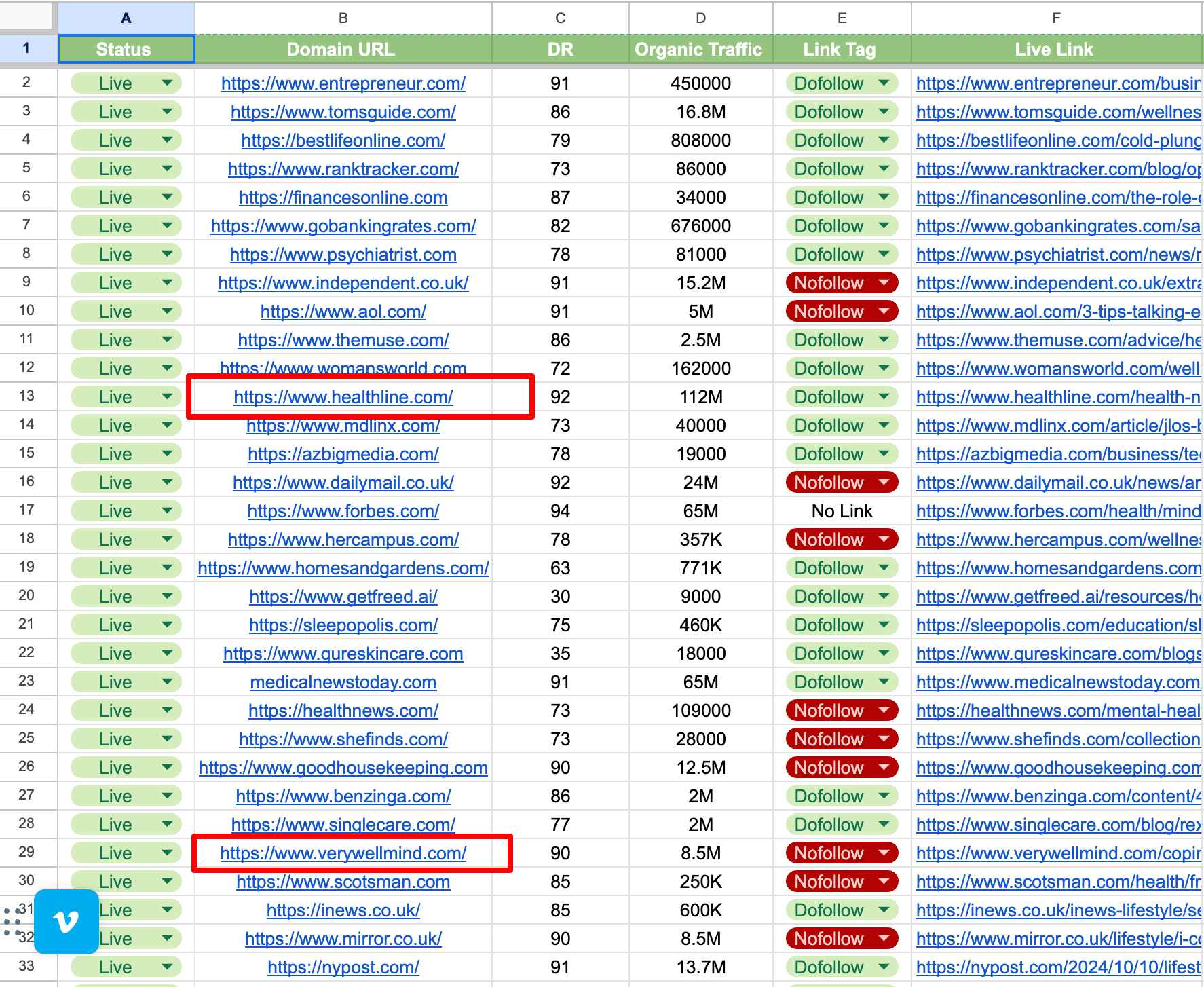
However, after eight months of consistent effort, the site’s traffic was still dead flat. No meaningful growth. Google kept deindexing more and more of those low-quality pages, almost daily.
After that, the founder doesn’t even want to trust us to manage the rest of the SEO efforts because they think SEO didn’t work, when in truth, it was the content strategy that dragged everything down from day one.
Sometimes, people don’t want to hear the hard part, that links alone can’t fix a broken strategy. This one’s a perfect example.
- Monthly traffic increase: from 0/month to 400/month
- Links built: 100-110 (Guest posting, niche edits)
- Links earned from HARO: 80+
- Period: 8 months
- PBNs
- Link Farms
- Sponsored Links
🚀 Case Study for a Password & Visas Service Provider
This one takes me back over three years ago when I first got the project through Upwork. I was still working solo back then; freelancer mode, full focus. The client had a pretty good-looking website, already getting some organic traffic, and they had built a bit of brand presence in their niche.
Not a giant, but not starting from zero either. At that time, I wasn’t deep into PR-style link-building yet. I mostly stuck to what I knew best: guest posting, niche edits, and a few digital partnerships here and there. That was my strategy, and it worked.
The client was fully committed. They had a decent budget for link-building and trusted me to handle it. So I started with a full audit of their backlink profile, just to see where they stood, and then ran a thorough competitor backlink analysis. From there, I built a custom link-building strategy. The goal was to secure 25 to 30 high-quality backlinks, all clean and relevant.
Over the next four to five months, I built more than 100 backlinks. All of them were from travel and lifestyle sites, which made perfect sense for their business.
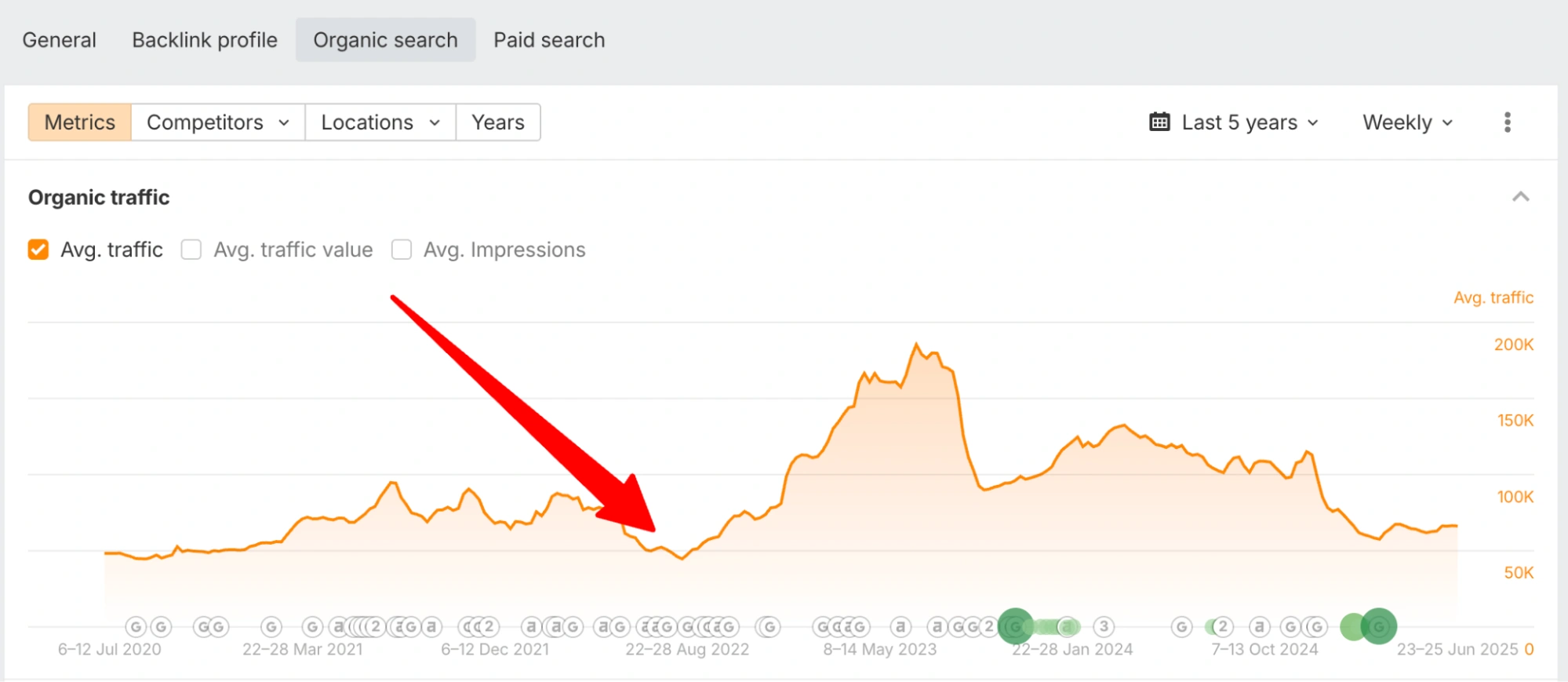
Around the third month, traffic started moving fast. A couple of their top pages jumped in rankings, and organic traffic picked up way sooner than expected. It was one of those early campaigns that really taught me how much difference relevance makes, and that volume means nothing if you don’t build with purpose.
- Monthly traffic increase: over 300%
- Links built: Over 140 (Guest posting, niche edits)
- Period: 5 months
- PBNs
- Link Farms
- Sponsored Links
🚀 Case Study for a B2B eCommerce
If you’ve worked with B2B companies, especially eCommerce B2Bs, you already know how behind they usually are when it comes to SEO. It’s not even a secret. Most of them are still stuck in that old-school mindset: sales teams dialing all day, trade shows, brochures, and maybe a PPC campaign, just because everyone else is doing it. For instance, ask them about B2B link building, and you’ll get blank stares, if they’ve even heard of it.
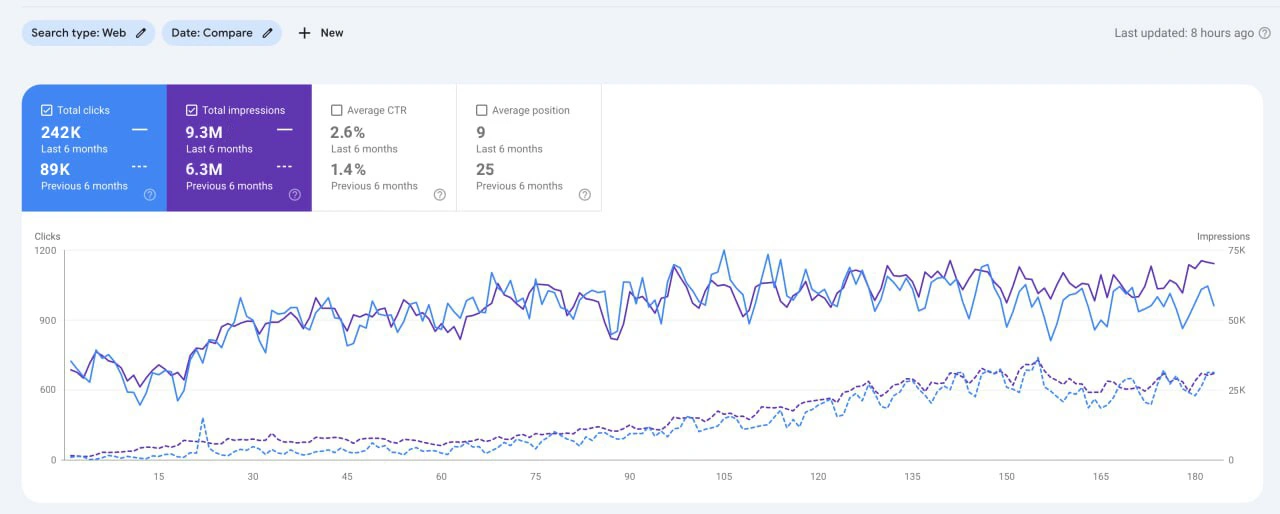
This particular client was a heavy equipment retailer. Big-ticket items. Been in business for years. Over 2 years ago, they decided it was finally time to start taking SEO seriously. When I say the website was a mess, I’m not exaggerating. Zero structure, broken pages, slow as hell, and content that felt like it was written in 2003.
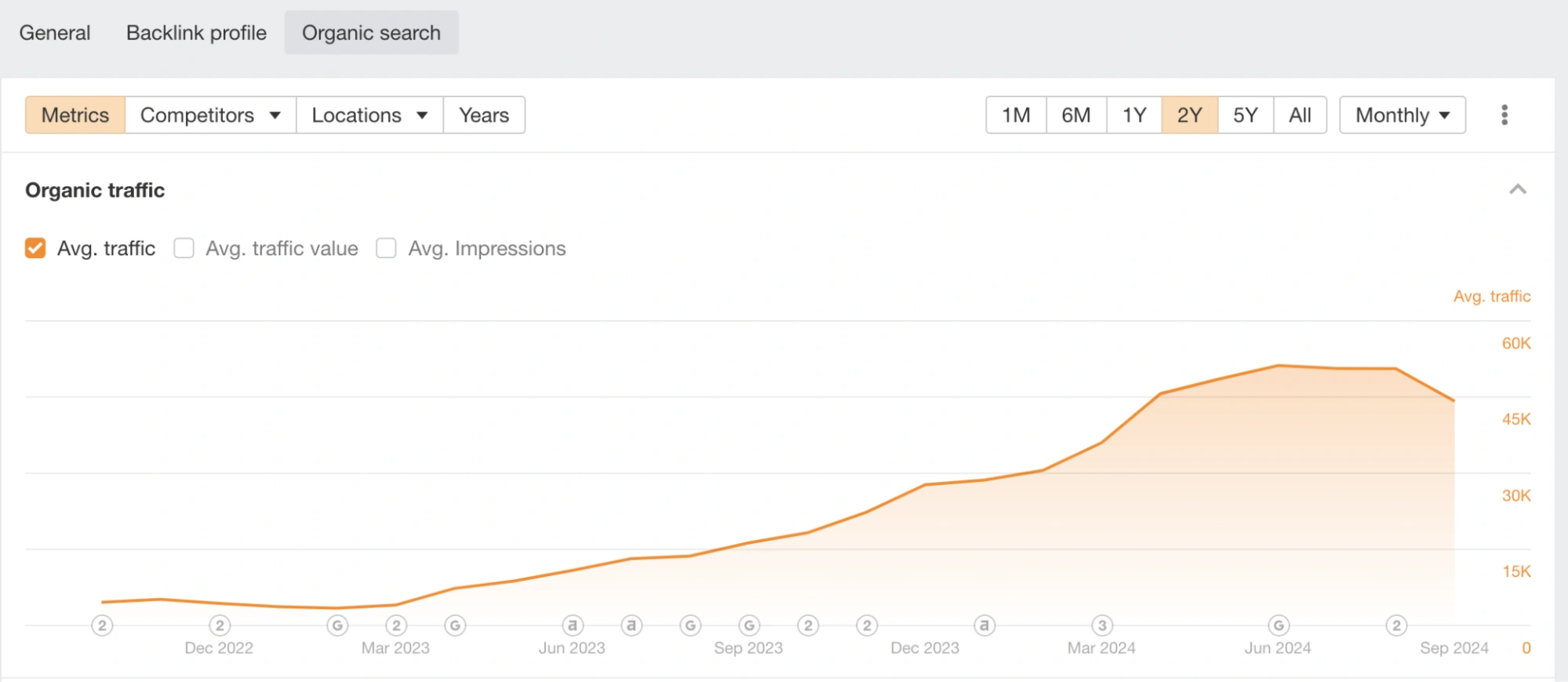
We kicked things off with a full SEO audit. We fixed technical stuff first: site speed, crawl issues, and indexation problems. Then moved into on-page fixes: cleaning up metadata, rewriting product descriptions, adding internal links, and restructuring categories. Everything. We didn’t even think about link-building until we saw green lights across the site.
Once the foundation was solid, we moved into eCommerce link-building. Mostly guest posts and niche edits; real ones, on actual relevant sites. Over six months, we secured 150 backlinks.
Here is how we distributed backlinks by page type:
Their organic traffic shot up from 4,000 to 40,000 monthly visitors. That’s a 900% increase.
- Monthly traffic increase: over 1000%
- Links built: Over 150 (Guest posting, niche edits)
- Period: 6 months
- PBNs
- Link Farms
- Sponsored Links
🚀 Case Study for a Grey Niche Website
I’ll be honest, grey niche clients usually have big budgets. Cannabis, casino, adult… they come in ready to spend. Yeah, that’s attractive. At Digital World Institute, we’ve worked with clients in those spaces.
In 2020, a client from such a niche approached us. I can’t even say what niche it was. Let’s just say it wasn’t legal. In cases like this, you don’t have many options. No legit site is going to give you a backlink. You can’t write guest posts. You can’t build relationships. You can’t even show your real brand most of the time.
So what did we do? We bought links. Around 250 of them over 12 months. From PBNs, link farms, and other sites that most SEOs avoid. But we checked traffic history, domain age, backlink profiles, and some basic stuff to at least keep things semi-clean.
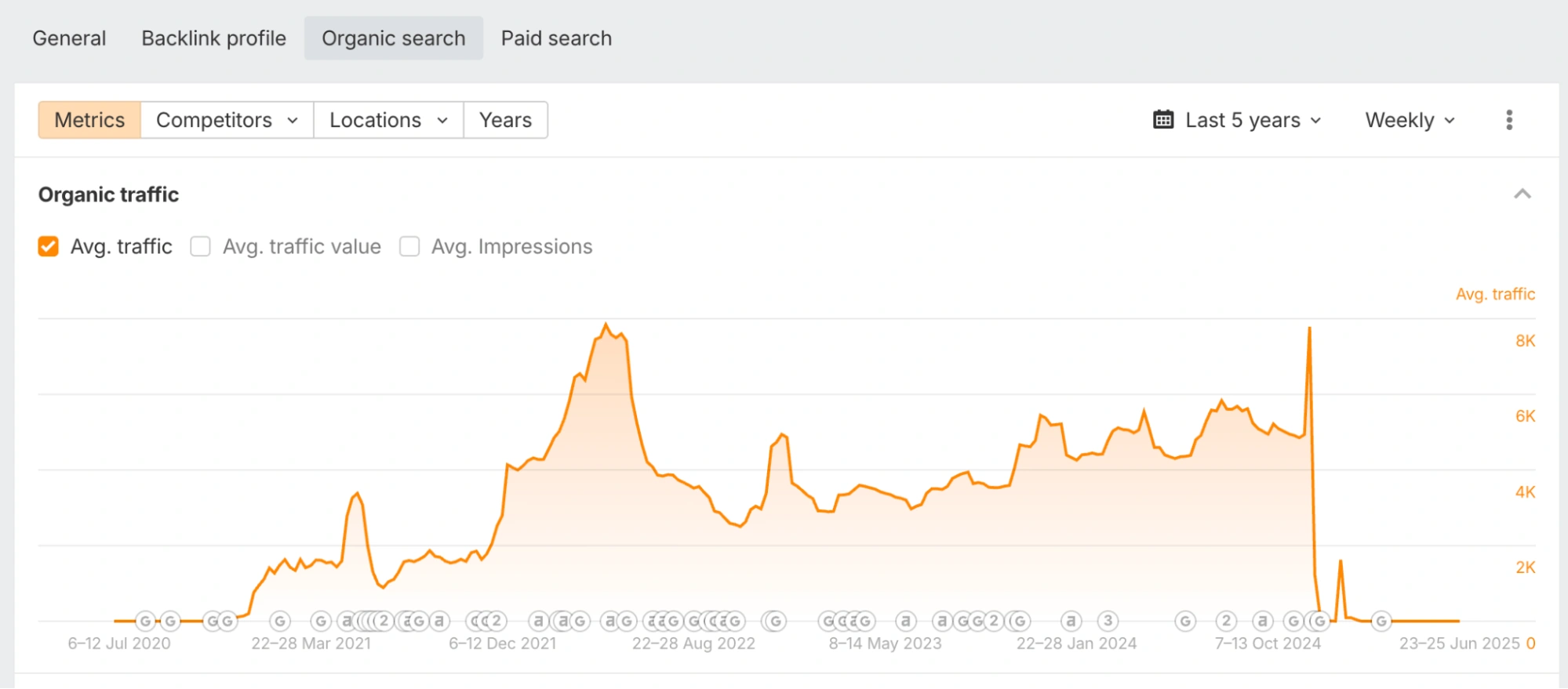
And it worked. After 3 months, their traffic grew 8 times. It was crazy. But then, slowly, things started to drop. No penalty, no warning; just a slow decline. That’s the risk with this kind of link-building. It works fast, but it fades fast too.
Finally, in 2024, they got penalized, even though we had already stopped link-building and other SEO activities back in 2022.
I’ve said it before, I hate Private Blog Networks (PBNs), spammy forum links, all of it. But in this case, there was no other way.
- Monthly traffic increase: over 800%
- Links built: Over 250 (Guest posting, niche edits)
- Period: 12 months
- Got Penalized
🚀 Case Study for a Forex Broker Company
Back in 2021, I worked with a Forex broker based in China. Their website was in English and aimed at traders across several Asian countries. At that time, I was still freelancing, and the client came to me with a very specific request: “Can you get me every backlink my competitor has?” His idea was simple: if it worked for them, it should work for us, right?
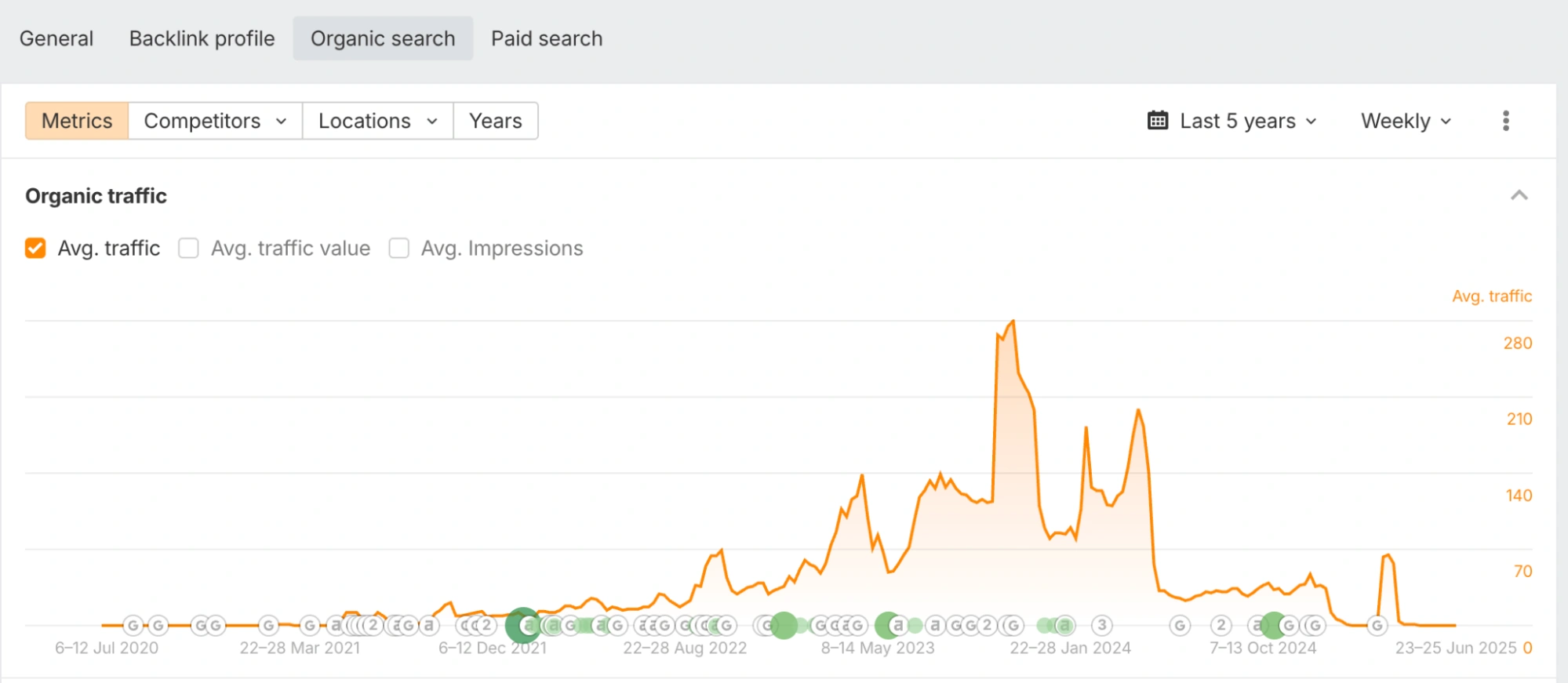
So I did exactly that. I analyzed the entire backlink profile of the top-ranking competitor and started reaching out to the same sites. I mean, I delivered what he asked for. However, nothing moved. Not even a slight ranking bump. I could already feel it halfway through the campaign.
The problem was that most of those backlinks were from the kind of sites you usually avoid: free guest posting websites, super generic blogs that’ll publish anything as long as you drop a line like “Great article, very informative” in the comments.
Somehow, those links had done something for his competitor, maybe because they’d been there for years or had some hidden redirects or aged metrics we couldn’t see from the outside. But for my client, it just didn’t work.
Google didn’t care. The links were there, technically, but they meant nothing. No trust!
That was one of those early reminders that SEO isn’t a game of copy-paste. You can’t just duplicate someone else’s backlink profile and expect the same results.
- Monthly traffic increase: Almost 0
- Links built: Over 80 (Guest posting, niche edits)
- Period: 6 months
- PBNs
- Link Farms
- Free Guest Posting Sites
🚀 Case Study for a Healthcare Provider
I love healthcare SEO. It’s probably one of the most rewarding and intellectually demanding sectors. Unlike the telehealth case study I shared earlier (which didn’t go exactly as planned), this one had a completely different story. We started from zero; literally no traffic, barely any authority, and within months, the site was generating over 300,000 visits per month.
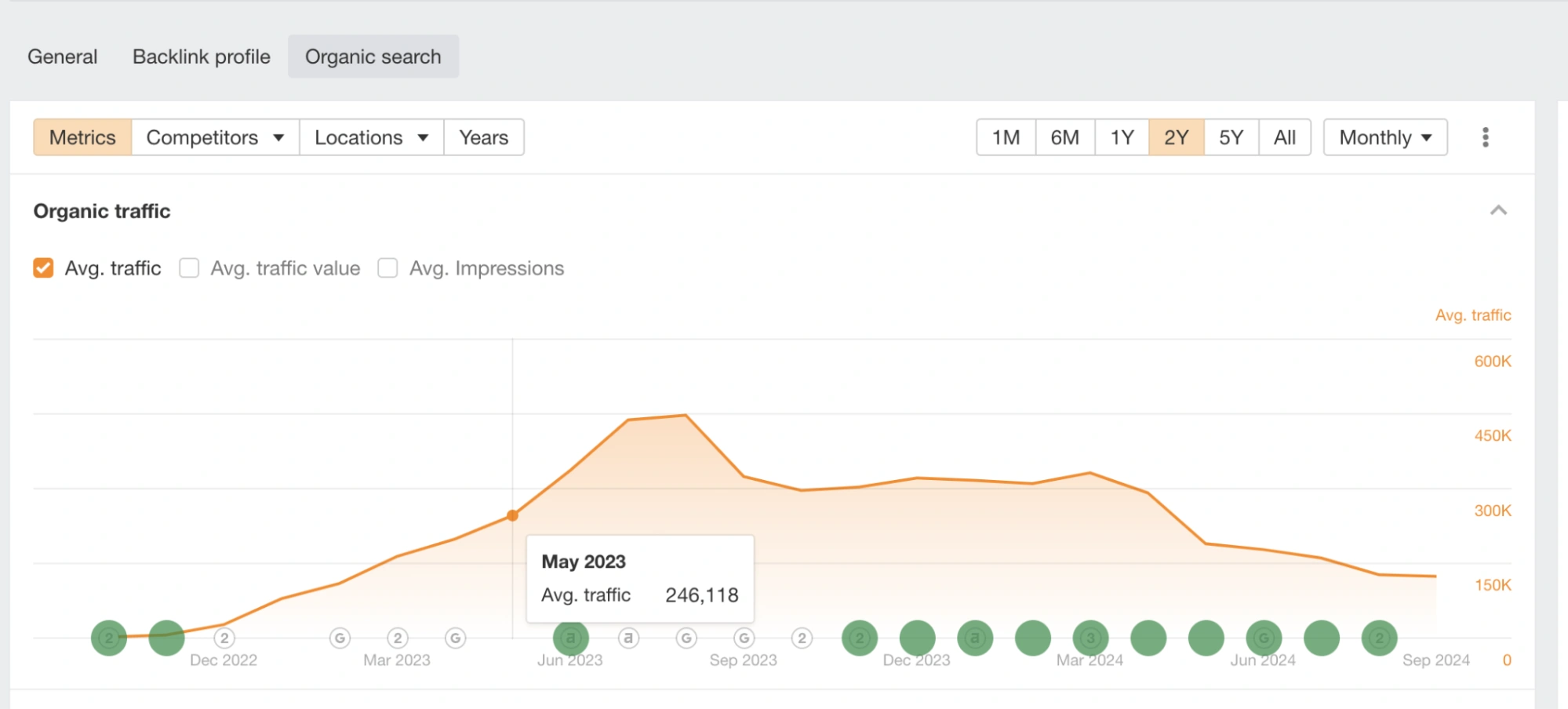
About 70% of the links came through HARO. Some were dofollow, some were nofollow, but every single one was from a relevant publication with real traffic. Alongside that, we earned a handful of unlinked brand mentions (which we later claimed), and the other 30% came through well-placed niche edits on health-focused blogs.
Once the content started ranking and gaining trust, we noticed something interesting: it began earning links on its own.
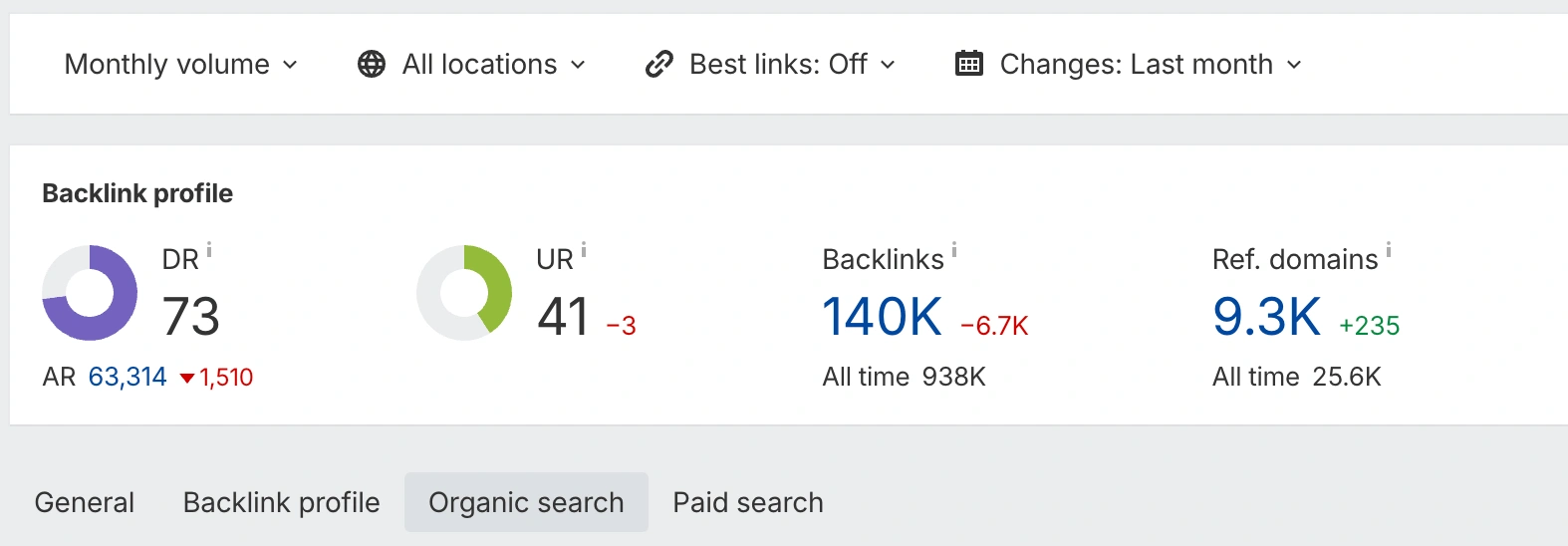
The client doubled down on expert-driven content, added detailed author bios, and kept medical reviewers on board, and it paid off. The site became one of those rare examples where everything just aligned: technical SEO, content quality, link-building, and brand credibility
- Monthly traffic increase: 0-to-over 300K/month
- Links built: Over 200 (HARO, niche edits)
- Period: 8-10 months
- PBNs
- Link Farms
- Sponsored Tags
🚀 Case Study for an Online Vaping Shop
This one was tough. We were working on a Magento-based eCommerce store in the vaping niche, and right from the start, I knew link-building would have to carry a lot of weight in the campaign. But if you’ve ever worked with a vaping client, you already know how messy things get. Most decent websites don’t want to touch anything vape-related. I’m not even talking about HARO link-building campaigns. The ones that did say yes quoted prices that were almost double the normal rate.
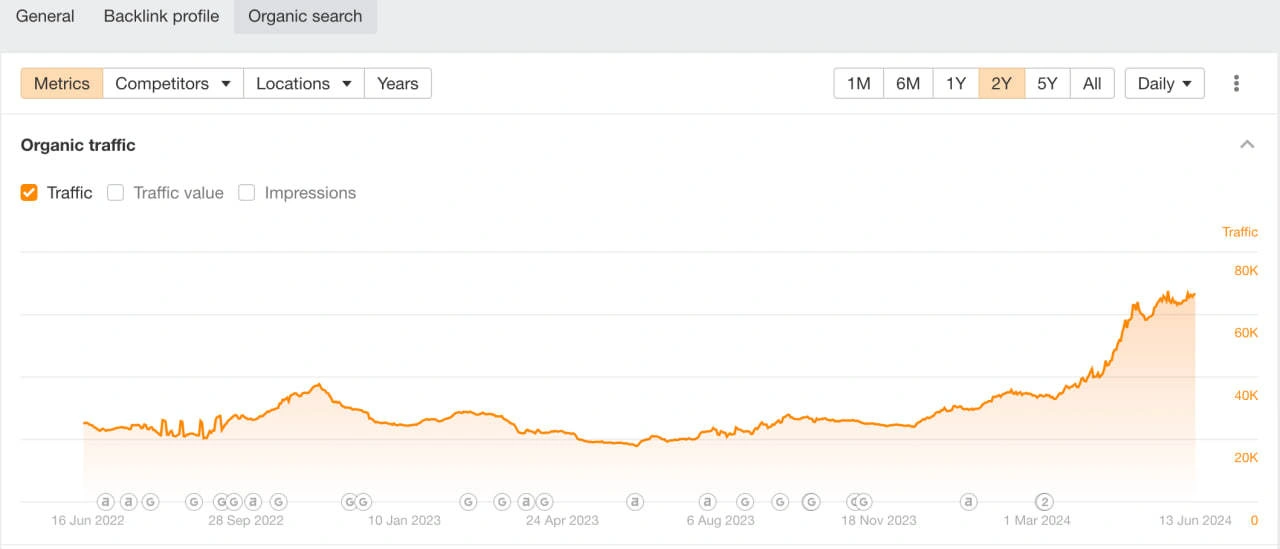
So instead of wasting time trying to get impossible wins, we shifted gears. We came up with listicle-style blog posts like “Top 10 E-Liquids for Beginners” and went hard on link-building for informational pages. It was cheaper, it worked, and it also helped keep our backlink profile looking natural.
We knew internal linking would be a good way to spread the link juice to commercial pages, so we made sure that the structure was tight.
We started small, just targeting the homepage in the first month or two to set the foundation. Once that worked a bit, we began diversifying: around 60 to 70 percent of links went to blog posts, and a small number, maybe 10 to 15 percent, to one or two collection pages.
Along the way, we uncovered a bunch of low-hanging keyword opportunities we hadn’t considered before. Our link-building agency built over 80 new sub-collection pages and revamped the entire navigation of the navbar.
By the 11th month, we were looking at real results. Traffic jumped from just over 20,000 visits per month to nearly 80,000. And yeah, link-building was a big reason why we got there. Not everything worked out perfectly, but this was one of those cases where sticking to the strategy, staying flexible, and keeping it real paid off.
- Monthly traffic increase: 20k/month-to-over 80K/month
- Links built: Over 220 (guest posting, niche edits)
- Period: 11 months
- 20-30% PBNs
🚀 Case Study for an Enterprise SaaS Company
Main concepts are the same in link-building, but enterprise link-building requires a different approach.
I still remember when I got hired by CapCut (owned by ByteDance, the same company that owns the popular video-sharing platform TikTok) through Upwork. It was the first time I worked with a brand that didn’t hesitate when it came to link-building costs. They weren’t looking for one person to run the whole thing either. I was part of a larger SEO team, and things were run like a machine.
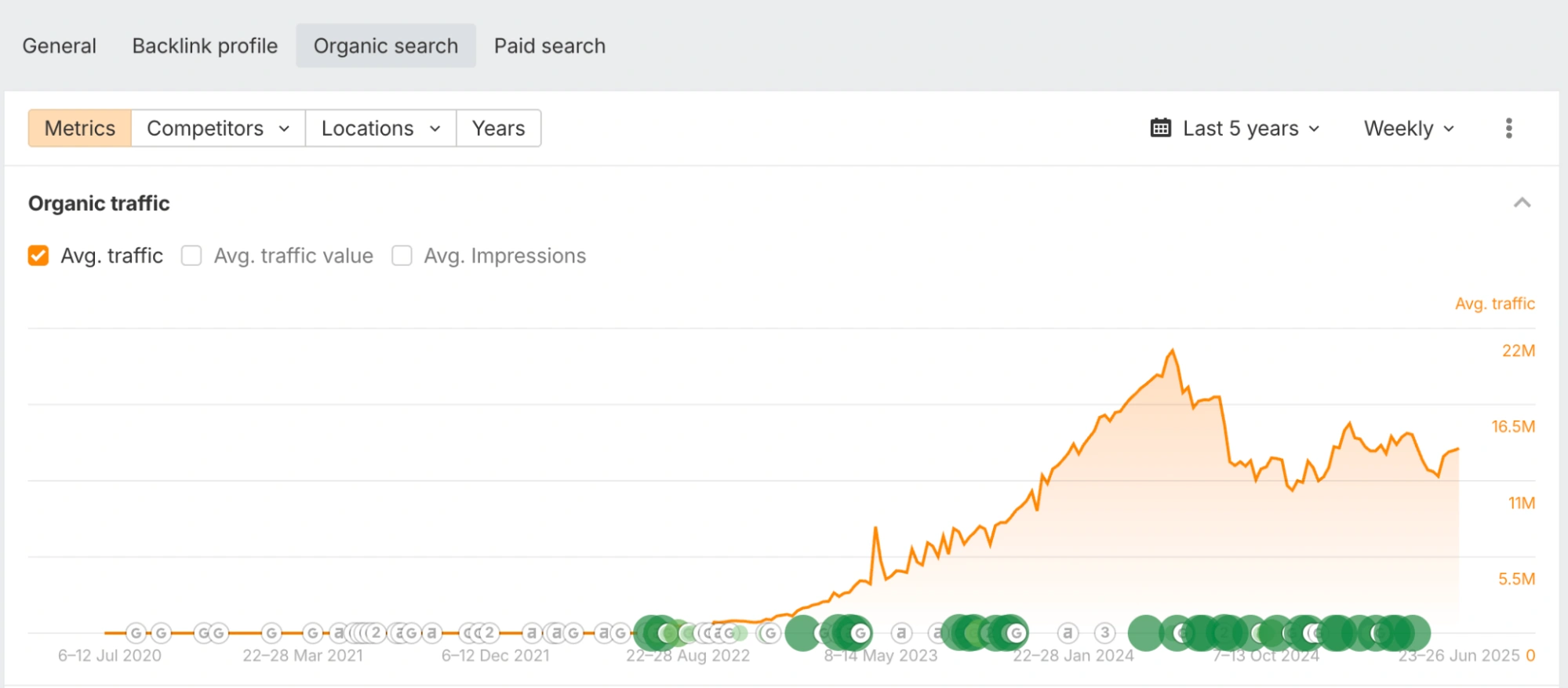
The SEO manager had one specific requirement: all links had to come from websites with at least 50 SEMrush Authority Score. I’ve said this before, and I still stand by it; these metrics aren’t the gold standard for judging link quality.
We were building around 200 to 250 backlinks every month. Some were PBNs (yes, they knew), and others were from tech blogs, SaaS sites, niche news outlets, anywhere relevant. If we couldn’t earn the link through value, we paid for it. Simple as that. In their case, money did move the needle.

To be honest, I expected them to eventually get penalized by Google. The scale was aggressive. However, CapCut’s now generating over 15 million organic visits, and not a single penalty in sight.
Sometimes I think Google just gives more leeway to massive brands. Either way, it worked. So, working on that link-building campaign taught me one thing: enterprise link-building is a different game, but the fundamentals are still very much in play.
- Monthly traffic increase: from 0 to 15M/month
- Links built: 1000+ (guest posting, niche edits, HARO, PR, etc)
- Period: 24+ months
- 25% PBNs
- 30% General Link Sellers
🚀 Case Study for a B2B SaaS Company
Again and again, when you’re deep in SaaS link-building, every link you earn from another SaaS brand feels inexplicable.
We partnered with a B2B SaaS company for full-on SEO management, and the game plan was clear: take over both sides of the equation: content strategy and link-building. It was 2022. No ChatGPT. No AI-powered SEO services in our stack. Honestly, we didn’t even know what prompts were. And yet, here we were building a strategy around their employee recognition software product.
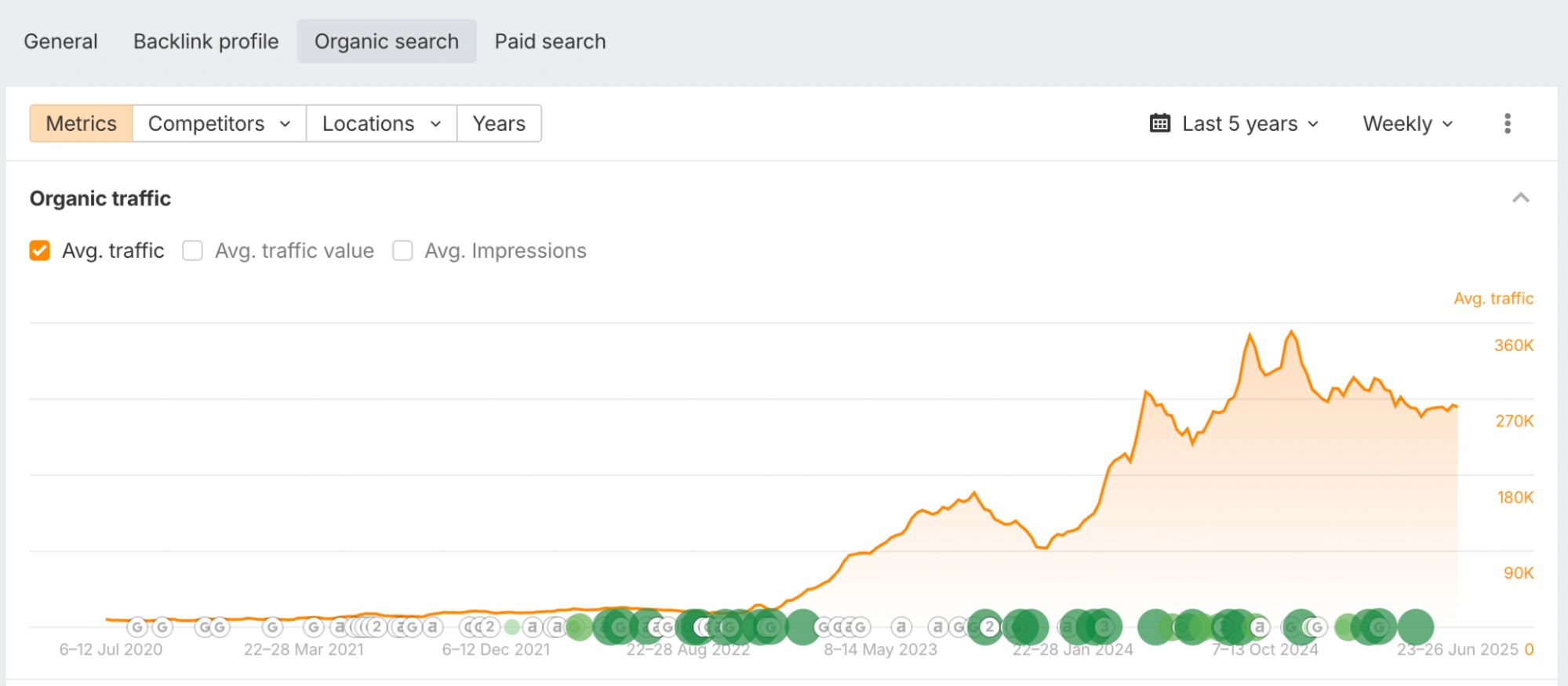
We kicked things off by mapping the content strategy from scratch and started publishing consistently. But the early days weren’t smooth. Indexing was a headache. I’m guessing it was the lack of authority. Whatever it was, Google wasn’t in the mood to pick us up quickly.
While the content waited to breathe, we rolled up our sleeves and started with HARO. Their CEO jumped in and started doing podcast guest spots and online events. He was actively helping us build links. That’s rare!
Back then, maybe 10 to 20 percent of SEOs were testing ABC exchanges. By mid-2023, Slack groups were flooded with threads about it. Everyone suddenly wanted in. We were already running it months earlier, and not just randomly. We built real systems around it.
Fast forward 16 months, and we started to see the fruits. Over 500 backlinks secured from all kinds of strategies. Currently site generates over 300,000 monthly visits.
- Monthly traffic increase: from 0 to 300K/month
- Links built: 500+ (guest posting, niche edits, HARO, PR, etc)
- Period: 16+ months
- No PBNs
- No Link Farms
The Bottom Line
SEO is not guaranteed, and things are 10 times more complicated, especially now when Google requires more effort to adhere to Google E.E.A.T., and general backlinks are not working in most cases. You can’t just buy a few guest posts and expect rankings to move.
Those days are gone. What worked for someone else might fall flat for your site. That’s why every campaign needs its own roadmap. In some cases, a single podcast placement can outperform 50 low-quality backlinks. In others, no matter how solid your content is, nothing moves until you fix technical or crawl issues.
The truth is that SEO is full of variables. But when you commit to doing the hard stuff: earning real links, publishing helpful content, and building actual relationships, you start stacking wins. Slowly, quietly, then all at once. That’s what these case studies show.





